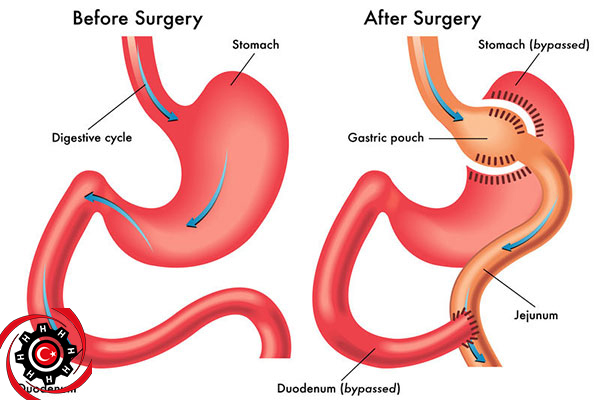Obesity means a person who has excess adipose tissue. It is one of the most common medical conditions in our society today
Obesity is responsible for many diseases that claim the lives of many individuals.
Although many people do not take it seriously, Obesity is a very dangerous disease. It affects the vital functions of the body, which leads to heart and arterial diseases, diabetes, Infertility and high blood pressure.
Obesity affects fertility. Obese women are more likely to suffer from ovarian problems and infertility. Modern medicine has found ways to treat obesity, including gastric banding, gastric sleeve, gastric balloon, and gastric bypass. In this article, we will discuss the details of the gastric bypass.
What is the gastric bypass process:
It is the first surgery in the world for obesity. This surgery is currently called the gold standard for obesity surgeries, as it is very effective in losing weight and is accompanied by a comfortable way to eat and a more satiety feeling with high efficiency with eating sweets and sugars.
How is the gastric bypass operation performed?
The gastric bypass procedure is done by dividing the stomach into a small upper bag and the remaining largest part of the stomach, and then it is reconnected with the intestine by the following steps:
- The patient is anesthetized by the anesthesiologist
- A carbon dioxide balloon is inflated through an incision above or below the navel to create space in the abdomen
- Several holes are made and the scope is inserted into the abdomen where it is connected to the TV screen to show the stomach and intestines.
- The doctor inserts a cautery and tweezers to cut the blood vessels and free the stomach from the fat that surrounds it.
- and then, The doctor cuts the upper part of the stomach in order to form a small stomach.
- The doctor bypasses the upper part of the intestine, cuts the remainder, and attaches it to the small stomach.
- In the last, It connects the rest of the intestine connected to the main stomach and duodenum with the small intestine again at a specified distance.
The aim of gastric bypass surgery:
– The goal of gastric bypass is first to reduce the size of the stomach that receives food by cutting the stomach into a small pocket, Secondly, enabling food to bypass a section of the small intestine by connecting the stomach pocket that receives food to the small intestine. You will feel satiety and fullness in a shorter time than you needed when your stomach was in its original size. This reduces the amount of food you eat. It lowers the number of calories you consume. like that, Bypassing a section of the intestine by diverting the stomach leads to the body absorbing fewer calories, Which leads to weight loss.
Who is eligible for gastric bypass surgery
- People with a body mass index between 35 and 39.9 with some comorbidities such as high cholesterol levels, high blood pressure and type 2 diabetes.
- Patients with diabetes mellitus and a body mass index of less than 50
- People who are addicted to sweets and have a BMI of less than 50
- People with a body mass index of 40 or higher without any comorbidities of obesity.
- People who have esophageal reflux
- People who have a hiatal hernia.
[pwww-bmi]


Leave a Reply